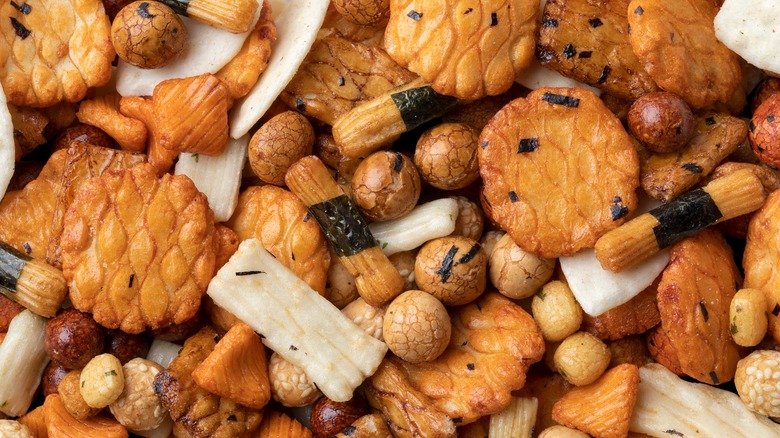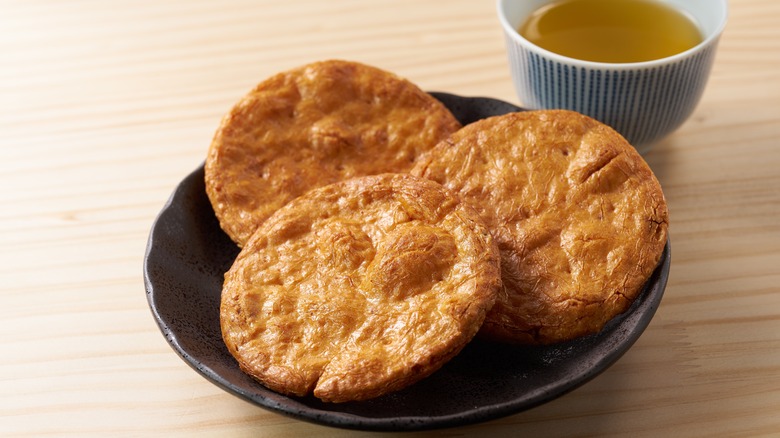The Sweet And Savory Japanese Snack Crackers That Date Back To The Tang Dynasty
Japan has become rather famous for their snacks, so much so that non-Japanese companies have started producing similar snack products of their own, like Trader Joe's line of Japanese foods. Some of the country's best snacks are the simplest, like their amazingly umami dried seaweed. Another classic snack that is elegantly simple but totally delicious is senbei, also known in English as rice crackers.
Not to be confused with water crackers, these crackers are specifically made from rice flour. Rice crackers can be made using glutinous or non-glutinous rice flour and are cooked in a variety of ways, including roasting, baking, or deep frying. They also come in a variety of different shapes and sizes. The word senbei refers to a wide array of rice crackers, each with unique tastes and textures. They come in sweet and savory flavors, as well as unique regional versions that can only be found in certain parts of Japan. Today, senbei is considered a quintessential Japanese snack. However, the snack's origins actually extend beyond the borders of the country.
The history of senbei
Rice crackers were initially introduced in Japan by the Chinese travelers and traders during the Tang Dynasty, who brought the crackers with them. Then, the crackers slowly began to gain popularity in Japanese cuisine. The name "senbei" first appeared shortly after in documents around 737, and the Japanese rice cracker was born.
The original recipe used wheat flour instead of rice flour and was typically fried. Changes in the recipe happened over time. During the Heian period, cooking methods started to vary and regional recipe variations began to emerge. The rice cracker became increasingly popular in Japanese culture later on in the Sengoku period, when it was used as emergency rations due to its convenience. The Edo period is when the modern form of senbei came into being. The crackers were infused with soy sauce and quickly gained popularity throughout the country. Unique flavors and shapes started to appear based on ingredients available in certain regions. Today, Japanese rice crackers are still loved by many and the snack continues to evolve in shape, flavor, and texture.

